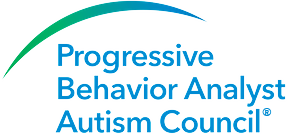SAMPLE VIDEO-BASED MULTIPLE CHOICE QUESTION
Question 1
What is the best suggestion a supervisor would provide for the interventionist?
A) Break down the skill into a receptive task
B) Determine if current client responding is a result of inattention or skill deficit
C) Provide prompts immediately to increase client success
D) Determine which program to run that targets attending skills
Question 2
After an initial interview with parents, you learn that they were not happy with previous ABA services and were hesitant to initiate ABA services again. They only resumed services because it is covered by insurance. You have not worked with clients who have a prior history of ABA services that were not perceived as successful. What is the next step to best serve the client?
A) Refer the client to another clinic since the parents’ bias will interfere with providing appropriate intervention.
B) Recommend counseling and support from a marriage and family therapist to the parents.
C) Continue with the case as usual, as the parents’ opinion of ABA would not affect services and outcome of intervention.
D) Reach out to colleagues that have experience with similar clients to gain mentorship on how to navigate the complex environment and appropriately support the parents.
Question 3
How does a progressive approach to a functional behavioral assessment differ from a conventional approach? A progressive approach will:
A) focus on skill development to prevent occurrence of problem behavior as well as ongoing analysis of problem behavior with corresponding adjustments to intervention.
B) rely solely on direct observations in the natural environment prior to developing and implementing problem behavior intervention strategies.
C) increase the interval between functional analysis sessions to minimize the risk of excessively evoking harmful problem behaviors.
D) continuously manipulate environmental variables to prevent the occurrence of problem behavior throughout intervention.
Question 4
You and your client determine that a useful skill to add to programming is relationship comprehension skills. This will include identifying categories of relationships and how people can shift between categories. When introducing the new program, you determine that the client lacks the prerequisite skill of perspective taking. What is the best way to proceed?
A) Develop perspective taking skills after relationship comprehension targets are mastered.
B) Only target relationship comprehension skills.
C) Develop needed perspective taking skills then return to targeted programming.
D) Identify a new target skill that does not have missing prerequisites.
Question 5
A 7-year-old client is meeting a lot of their behavioral goals and will transition into a general education classroom. What is the best next step when considering continued services for the client?
A) Evaluate developmental milestones appropriate to their developmental age.
B) Evaluate developmental milestones for their chronological age.
C) Reevaluate long term goals with the client that promote a high quality of life.
D) Since the client will be in a general education classroom, plan for discontinuation of services.
Question 6
When conducting a parent interview about a potential new client, using clinical sensitivity and professionalism are vital in gaining trust and establishing a relationship. Which skills describe a more progressive approach to parent engagement in this context?
A) Using scripted clinical interviews, offering ideas for behavior supports, taking notes
B) Use active listening behavior, asking open ended questions, asking follow up questions.
C) Using validated assessment tools, asking questions only about the client, staying on time
D) Using empathy, dressing casually, making sure to play with the client
Question 7
As part of your intake process for new clients, you arrange an observation of a client in their home. Toward the end of your observation, the client engages in aggression toward their parents. Immediately following the observation you conduct a structured interview, which was the next step in your assessment plan.
Which of the following variables likely affected validity of the information obtained through the interview?
A) The use of a structured interview as opposed to a less formal interview.
B) The interview occurring in the home as opposed to the school environment.
C) The interview occurring with the parents as opposed to others (e.g., teachers).
D) The latency between the aggressive behavior and the structured interview.
Question 8
What is an advantage of directly observing a client in their natural environment as opposed to conducting interviews?
A) It is more ecologically valid.
B) It requires less time.
C) It is less intrusive.
D) It is more socially valid.
Question 9
Which of the following would NOT be considered a learning-how-to-learn goal?
A) Length of utterance
B) Auditory attention
C) Waiting
D) Visual attending
Question 10
A progressive behavior analyst supervisor should make sure to train an interventionist to conduct which of the following as it pertains to reinforcer analysis?
A) Multiple stimulus without replacement reinforcer assessment prior to each session.
B) Free operant preference assessment throughout each session.
C) In-the-moment reinforcer analysis throughout the session.
D) Multiple stimulus with replacement preference assessment prior to each session.
KEY: 1, B; 2, D; 3, A; 4, C; 5, C; 6, B; 7, D; 8, A; 9, A; 10, C
